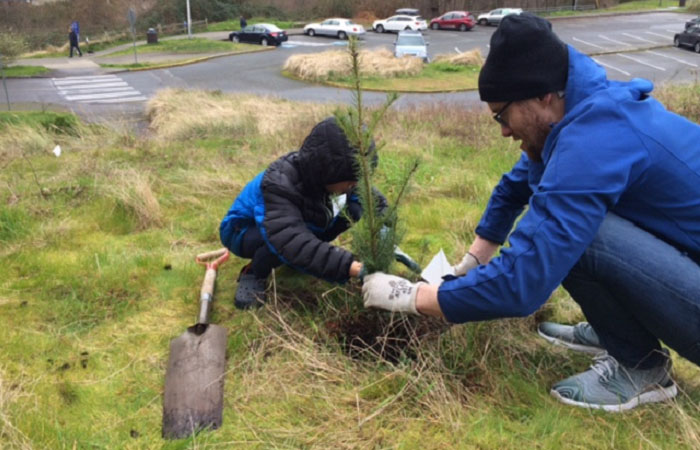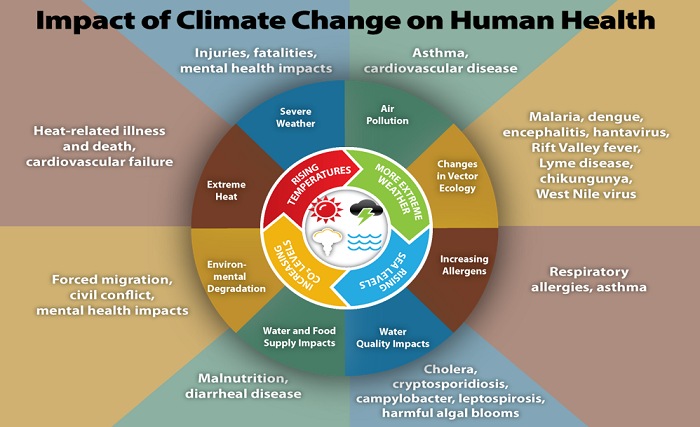Cultivating a Healthy Environment for Our Children
8.6.2020 | Seattle Children's Press Team

In unprecedented times like this, we often reflect on what we, as humans, can do to better our world. In terms of climate change, there are many ways we can make a difference, whether on a small or large scale, in order to create a sustainable and healthy environment for all.
Seattle Children’s is committed to fulfilling its mission of treating the whole child, and with this comes the responsibility of understanding the facts, sharing our knowledge, and developing ways to combat climate change and its drastic impact on our health.
Children are especially vulnerable to the health effects of climate change. As an organization, we strive to minimize our carbon footprint and improve the health and well-being of our patients, families, workforce, and local and global community.
Knowing the facts

It is scientifically evident that with global warming, the Pacific Northwest region has been experiencing hotter days that have led to wildfires, higher streamflow in the winter and lower streamflow in the summer, reduced snowpack, prolonged drought, water shortages, increased heavy rain events and sea level rise.
Severe weather, air pollution and extreme heat are just three factors impacting our overall health. According to the American Academy of Pediatrics, climate change poses threats to human health, safety, and security, and children are uniquely vulnerable to these threats. Given this knowledge, failure to take prompt, substantive action would be unjust to all children.
That’s why teaching children about climate change is crucial in building a better future for future generations.
“We need to communicate to our children the importance of natural life and how we depend on natural resources, which are finite,” Dr. Markus Boos, a climate change advocate and dermatologist at Seattle Children’s, said. “Children are drawn to a sense of ‘fairness’ in our world rooted in equity and justice, and without everyone doing their part to take care of our natural resources, our environment and health will suffer.”
As an example, Boos encourages parents and caregivers to share how the environment affects all of us.
“Talk about simple things like recycling, composting, why we should choose to walk instead of drive, and using reusable bags when we go shopping,” Boos said. “Be purposeful and intentional and model positive behavior that children will then follow.”
Seattle Children’s commitment
To help mitigate the health impacts of climate change, not only do we need to teach children about the health impacts of climate change in general, but we must also be aware of how the healthcare sector is contributing to and impacted by greenhouse gas emissions, and how Seattle Children’s is working to improve its carbon footprint.
Greenhouse gas are gases that trap heat in the atmosphere. The U.S. Environmental Protection Agency states that human activities are responsible for almost all of the increase in greenhouse gases in the atmosphere over the last 150 years. The largest source of greenhouse gas emissions from human activities in the U.S. is from burning fossil fuels for electricity, heat, and transportation.
Our carbon footprint is the total amount of greenhouse gases that are generated by our actions.
According to this study, the healthcare industry contributes almost 10% of U.S. greenhouse gas emissions, and hospitals are the second most energy intensive facilities in the country, using 2.5 times more energy per square foot than other commercial buildings.
“Seattle Children’s has been working on various ways to improve its energy consumption,” Boos said. “From staff transportation incentives, to building new locations such as our second Odessa Brown Children’s Clinic in a neighborhood accessible to those who need it, to offering telemedicine options to help limit the traffic coming to our sites — these are just a few ways we are helping to make a difference.”
To cultivate a healthier environment, Seattle Children’s has made a steadfast commitment for the organization to go carbon neutral by the year 2025. Carbon neutrality means achieving net zero carbon dioxide emissions by balancing carbon emissions with carbon removal (often through carbon offsetting) or simply eliminating carbon emissions altogether.
Along with the mission of improving the health of the children in our community, the driving factors that constitute this commitment include:
- Environmental justice: Underserved communities and communities of color in the U.S. are disproportionately impacted by the health effects brought on by climate change. We are working to decrease our greenhouse gas emissions because we care about community health.
- Regulatory requirements: The 2019 Washington state Clean Buildings bill or House Bill 1257, requires hospitals to meet ambitious energy performance targets. Decreasing energy will decrease our emissions.
- Cost savings: The primary focus of our climate action plan will be energy reduction that will reduce our annual utility costs.
“Seattle Children’s is committed to the health of all children, so pursuing a carbon neutral goal for our organization is important as children are one of the most vulnerable populations to the impacts of climate change,” Russ Williams, senior vice President and Chief Operating Officer at Seattle Children’s said. “Action to reduce our impact on climate change aligns with our mission and our vision for community health.”
What you can do
While tackling climate change as a whole can be an overwhelming feat, there are many simple ways to support climate action and energy reduction.
“Alternative commuting, such as taking public transit, is one action you can take,” Colleen Groll, manager of Sustainability Programs at Seattle Children’s, said. “There are high impact actions such as adopting a plant based diet, buying green energy utilities, and simply talking about the connection between climate and health with your friends, family, neighbors.”
Moderate impact actions include, reducing home energy use, planting a garden, eating local and organic, and unplugging your devices.
“The power lies in us in making a better environment for our community,” Boos said. “I’m proud to be a part of an organization whose core value is a commitment to equity and fostering a healthier world for all children.”